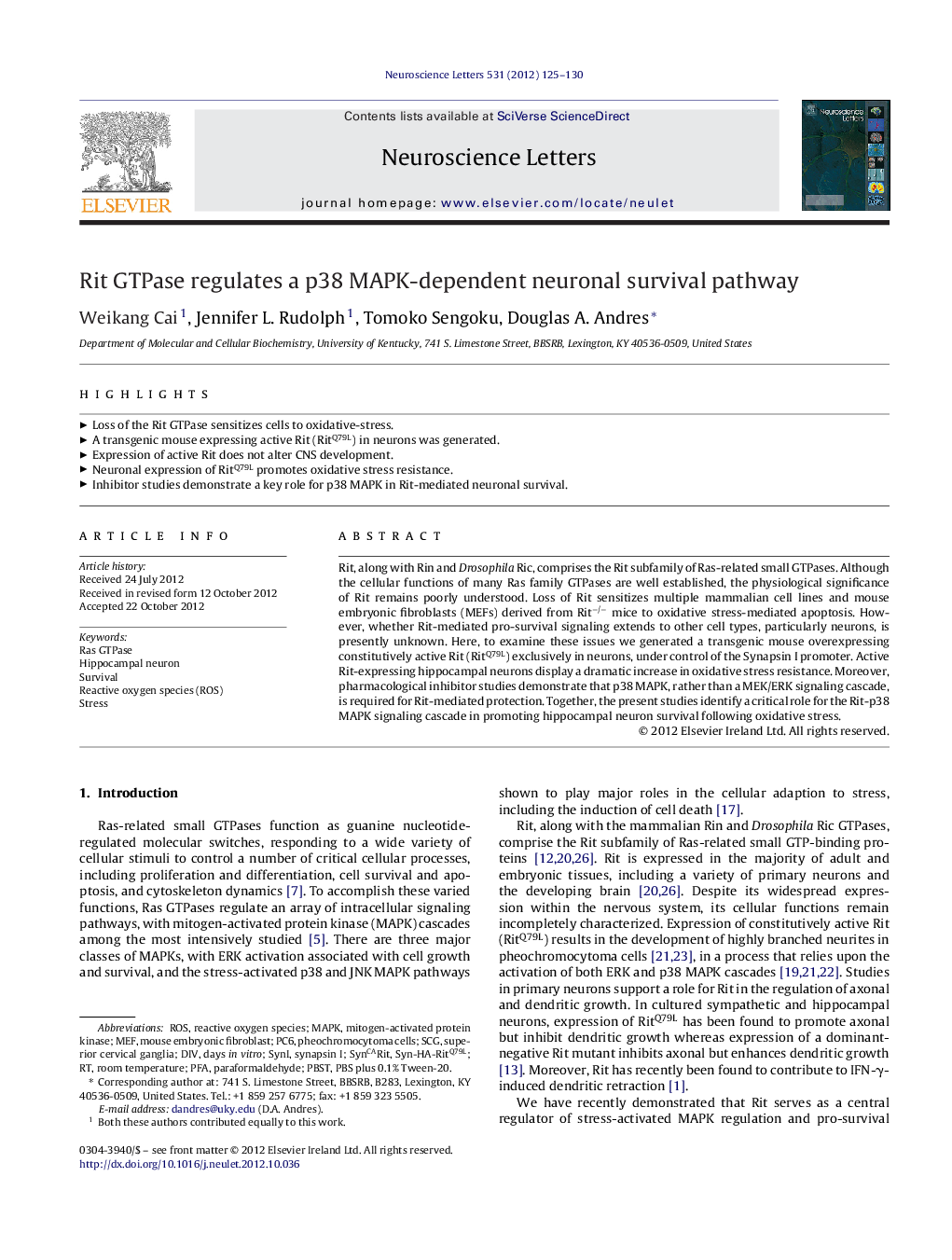| Article ID | Journal | Published Year | Pages | File Type |
|---|---|---|---|---|
| 4344141 | Neuroscience Letters | 2012 | 6 Pages |
Rit, along with Rin and Drosophila Ric, comprises the Rit subfamily of Ras-related small GTPases. Although the cellular functions of many Ras family GTPases are well established, the physiological significance of Rit remains poorly understood. Loss of Rit sensitizes multiple mammalian cell lines and mouse embryonic fibroblasts (MEFs) derived from Rit−/− mice to oxidative stress-mediated apoptosis. However, whether Rit-mediated pro-survival signaling extends to other cell types, particularly neurons, is presently unknown. Here, to examine these issues we generated a transgenic mouse overexpressing constitutively active Rit (RitQ79L) exclusively in neurons, under control of the Synapsin I promoter. Active Rit-expressing hippocampal neurons display a dramatic increase in oxidative stress resistance. Moreover, pharmacological inhibitor studies demonstrate that p38 MAPK, rather than a MEK/ERK signaling cascade, is required for Rit-mediated protection. Together, the present studies identify a critical role for the Rit-p38 MAPK signaling cascade in promoting hippocampal neuron survival following oxidative stress.
► Loss of the Rit GTPase sensitizes cells to oxidative-stress. ► A transgenic mouse expressing active Rit (RitQ79L) in neurons was generated. ► Expression of active Rit does not alter CNS development. ► Neuronal expression of RitQ79L promotes oxidative stress resistance. ► Inhibitor studies demonstrate a key role for p38 MAPK in Rit-mediated neuronal survival.
